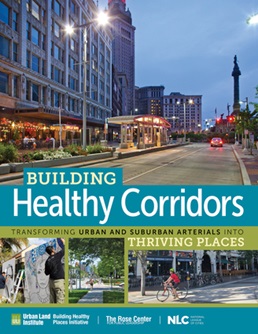Building Healthy Corridors

Transforming Urban and Suburban Arterials into Thriving Places
Corridor redevelopment is not a new topic. Various planning and design approaches—such as complete streets, living streets, and livable streets—aim to redevelop commercial corridors to meet more of their users' needs, including their need for walking and biking rather than just traveling by car. A marked difference between a healthy corridors approach and other approaches is that the former looks beyond just the street and considers how the street supports the daily needs of all who live, work, and travel along it. Building Healthy Corridors: Transforming Urban and Suburban Arterials into Thriving Places takes a comprehensive view and considers how the corridor contributes to the overall health of the surrounding community, including community members' opportunities to be physically active. It also considers safety, housing affordability, transportation options, environmental sustainability, and social cohesion as well as modifications that would link residents to the corridor and improve connections to jobs and adjacent parts of the community.
Book Summary: Corridor redevelopment is not a new topic. Various planning and design approaches—such as complete streets, living streets, and livable streets—aim to redevelop commercial corridors to meet more of their users' needs, including their need for walking and biking rather than just traveling by car. A marked difference between a healthy corridors approach and other approaches is that the former looks beyond just the street and considers how the street supports the daily needs of all who live, work, and travel along it. Building Healthy Corridors: Transforming Urban and Suburban Arterials into Thriving Places takes a comprehensive view and considers how the corridor contributes to the overall health of the surrounding community, including community members' opportunities to be physically active. It also considers safety, housing affordability, transportation options, environmental sustainability, and social cohesion as well as modifications that would link residents to the corridor and improve connections to jobs and adjacent parts of the community.


